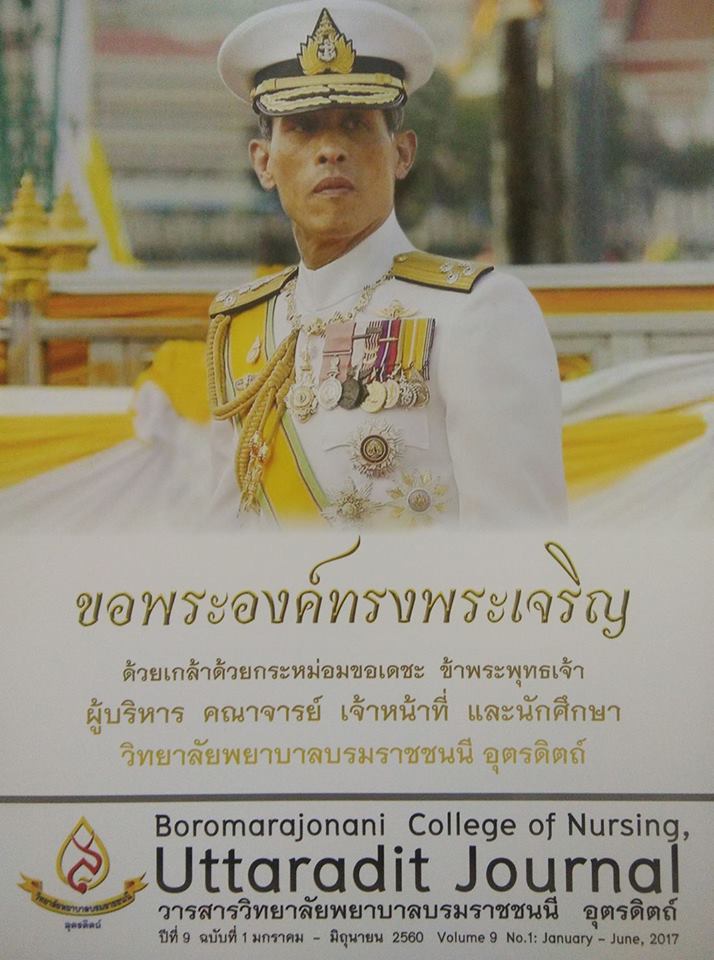กลยุทธ์การเงินของผู้บริหารการเงินการคลังของโรงพยาบาลชุมชนสังกัดกระทรวงสาธารณสุข
Main Article Content
บทคัดย่อ
วัตถุประสงค์การวิจัยเพื่อศึกษาองค์ประกอบกลยุทธ์การเงินของผู้บริหารการเงินการคลัง (Chief Executive Officer : CFO) ในโรงพยาบาลชุมชน สังกัดกระทรวงสาธารณสุข การวิจัยในครั้งนี้ใช้กรอบแนวคิดกลยุทธ์การเงินของ Bielefeld (1992) จำนวนกลุ่มตัวอย่างของผู้บริหารโรงพยาบาลชุมชนที่ใช้ในการเก็บข้อมูลทั้งหมดจำนวน 160 คน จาก 160 โรงพยาบาล เครื่องมือที่ใช้ในการวิจัยครั้งนี้ได้ขออนุญาตในการนำมาใช้ ปรับปรุงและแปลย้อนกลับ (Backward translation) ซึ่งมีค่าความตรงเชิงเนื้อหา มีค่าเท่ากับ .8965 และมีค่าความเที่ยง เท่ากับ .937 ผลการวิเคราะห์องค์ประกอบเชิงยืนยันของกลยุทธ์การเงินโรงพยาบาล พบว่า ค่าสถิติมีความกลมกลืนกับข้อมูลเชิงประจักษ์ ได้แก่ ค่าไคสแควร์ (X2) มีค่า p - value =148, ค่าไคสแควร์หารด้วยองศาความเป็นอิสระ (X2/ df or CMIN/DF) ค่าเท่ากับ 1.102, Root Mean Squareerror of Approximate (RMSEA) มีค่าเท่ากับ .022 , Goodness of Fit (GFI) เท่ากับ .943, Adjust GFI (AGFI) มีค่าเท่ากับ .928, NFI (Normed fit index) มีค่าเท่ากับ .914 RFI (Relative fit index) มีค่าเท่ากับ .984, IFI (Incremental fit index) มีค่าเท่ากับ .987 และ HOELTER มีค่าเท่ากับ 209 ผลการวิเคราะห์องค์ประกอบ เชิงยืนยัน (Confirmatory Factor Analysis) กลยุทธ์การเงินโรงพยาบาลเรียงลำดับจากมากไปน้อย ได้แก่ 1) กลยุทธ์การแสวงหารายได้ใหม่ (New revenue: NR) มีน้ำหนักองค์ประกอบ เท่ากับ 1.00 2) กลยุทธ์การควบคุมค่าใช้จ่าย (Retrenchment: RET) มีน้ำหนักองค์ประกอบ เท่ากับ.89 3) กลยุทธ์การพัฒนาโรงพยาบาลตามภารกิจ (Legitimation: LEG ) มีน้ำหนักองค์ประกอบ เท่ากับ .78 ตามลำดับ ข้อค้นพบจากการวิจัยครั้งนี้บ่งชี้ว่า ผู้บริหารโรงพยาบาลชุมชนควรให้ความสำคัญกับการพัฒนาสมรรถนะผู้บริหารด้านการเงินของโรงพยาบาลชุมชนสังกัดกระทรวงสาธารณสุข โดยเฉพาะกลยุทธ์การแสวงหารายได้ใหม่
และกลยุทธ์การควบคุมค่าใช้จ่าย การวิจัยครั้งต่อไปควรศึกษาการพัฒนากลยุทธ์การเงินที่ส่งผลต่อผลการดำเนินงานด้านการเงินของโรงพยาบาลชุมชน
Article Details
บทความหรือข้อคิดเห็นใดใดที่ปรากฏในวารสารวิจัยการพยาบาลและวิทยาศาสตร์สุขภาพ เป็นวรรณกรรมของผู้เขียน ซึ่งบรรณาธิการหรือสมาคมศิษย์เก่า ไม่จำเป็นต้องเห็นด้วย และบทความที่ได้รับการตีพิมพ์เผยแพร่ถือเป็นลิขสิทธิ์ของวารสารวิจัยการพยาบาลและวิทยาศาสตร์สุขภาพ
เอกสารอ้างอิง
2. Folcarelli, E. A. (2014). The effects of resource dependence, institutional pressure, and strategic choice on financial performance of nonprofit community behavioral healthcare organizations (Order No.3670189). Available from ProQuest Dissertations & Theses Global. Retrieved fromhttps://search.proquest.com/docview/1649187526
3. Gapenski, L., Vogel, W., and Langland-Orban, B.(1993). The determinants of hospital profitability.Hospital and Health Services Administration, 38(1), 63-80.
4. Health Insurance Group, Office of the Permanent Secretary (2011). Workshop on National Health Security Fund down 255 years.Retrieved 1 July, 2558 from https://thaipublica.org/2011/09/10-years-healthcare/ (in Thai).
5. Kanokwongnuwat, P. (2013). Model of Hospital Management on Breakthrough Financial Crisis. The Journal of Prapokklao Hospital Clinical Medical Education Center.30 (2), 106-122 (in Thai).
6. Kulriwarnarat,V. (2013). Efficiency of Fiscal Management of Service Facilitiesunder Mukdahan Provincial Health Office, fiscal year 2010 - 2012. Retrieved1 July 2015. from www.higthai.org (in Thai).
7. Nuchphong, C. (2014). Financial management model in financial crisis of Bandanlanhoi community hospital Sukhothai province. Chonburi Hospital journal. 39(3), 165-172 (in Thai).
8. Sornchumni, C. (2007). Financial Management Strategy of Health Service Sector. Sukhothai Thammathirat Open University (Mimeographed) (in Thai).
9. Tairuekham, S. (2008). Research Methodology for Humanities and Social Sciences. 2nd Edition. Kalasin : Prasan Printing (in Thai).
10. Wongrattana, C.(2001). Research for Learning. Bangkok: Tips Publication (in Thai).


